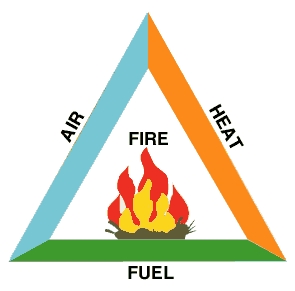Fire Extinguishers
Various fire extinguishers exist for use on different fire sources. When dealing with a fire which is being fuelled by burning wood or paper, you may act very differently from the way you would on an electrical fire. Obviously water cannot be used on an electrical fire as water conducts electricity and could put you in grave danger if mixed with live electrics. This means you must choose a suitable fire extinguisher for the job in hand – even in the most perilous of emergency situations. Every fire extinguisher has a colour-coded band that gives a quick reference as to what is in the container. It is essential that you learn these codes and the situations in which they are suitable to be used.
Black - CO2 (Carbon Dioxide)
CO2 fire extinguishers are recommended for fires involving electrical equipment. It is safe to use because as the gas itself is non-conductive and once used, there is no sticky foam or messy powder left behind. They are also effective on Class B fires (flammable liquids). Carbon dioxide fire extinguishers have a black panel above the operating instructions. They have a distinctive horn-shaped nozzle at the side to direct the gas towards the fire source. Please beware of CO2 extinguishers as they are not to be used in very confined spaces due to possible asphyxiation. The nozzle and body of the extinguisher also become extremely cold during use and it is also very loud, so hold it by the handle only and be prepared for an ear-splitting noise.
Blue - Dry Powder
Dry powder fire extinguishers are excellent all-round fire extinguishers, often recommended for use on vehicles and in the home. All powder fire extinguishers are red with a blue panel and are safe to be used on fires involving electrical equipment. Dry powder extinguishers are not suitable for use in enclosed spaces as the fire-fighting agent creates a cloud that can obscure vision. The contents may also create breathing problems.
Cream - Wet Foam
Modern Aqueous Film Forming Foam (AFFF) fire extinguishers are one of the best all-round units available for non-electrical combustibles. Foam extinguishers are red with a cream panel above the operating instructions and excrete a jet of white wet foam. This constricts the fire source and removes heat, putting the fire out very quickly.
Red - Water
Water remains one of the most effective fire-extinguishing agents around. Water extinguishers should only be used on Class A fires (ordinary combustible fires). This includes non-volatile materials such as paper, wood, fabrics, furniture, etc. Be very careful to make sure there are no electrical appliances near you when deploying a water fire extinguisher.
The Fire Triangle
Understanding how a fire burns will assist you in your choice of fire extinguisher, if the need may arise to use one. Three things are needed for a fire to take hold, and if any of the 3 things are removed, the fire will be extinguished. The fire triangle is used to illustrate this:
Oxygen, fuel and heat are all essential for a fire to burn. Remember – remove any of the three and the fire will be extinguished.
• Remove the heat, the fire cools down.
• Remove the oxygen, the fire is smothered.
• Remove the fuel, the fire is starved.
Fire Extinguisher Chart
Not all extinguishers can be used on all types of fires. Look at the table below for a guide.


